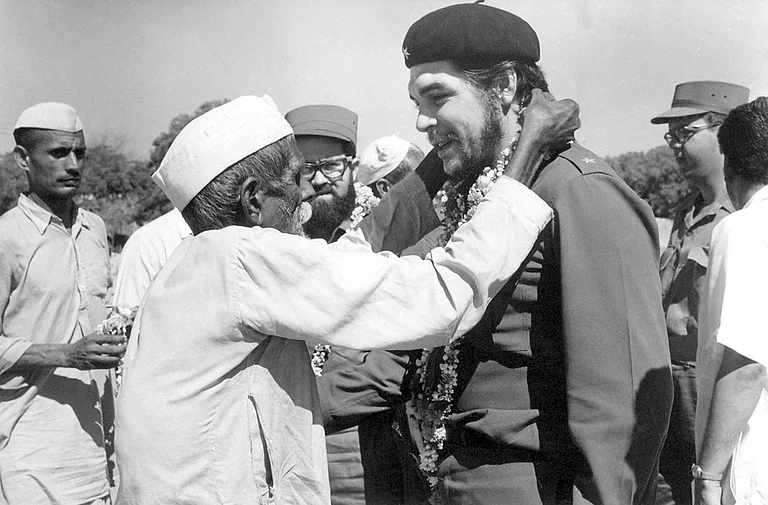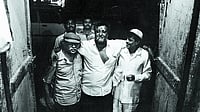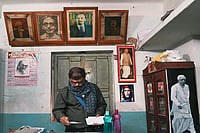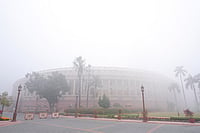On July 10, 1806, exactly two hundred years ago, as themoon shone over the ramparts of the Vellore fort, at 2 a.m., Indian sepoys rosein a bloody revolt against the East India Company’s garrison. As shrieks andgunfire pierced the quiet, the sepoys shot at English officers, fired into theEuropean barracks and massacred the sick in their hospital, leaving 14 Britishofficers and 100 soldiers dead. In the counterattack unleashed at 9 a.m. byColonel Robert Rollo Gillespie’s men, who rushed from Arcot 14 miles away, 350Indians sepoys were put to death. Some British accounts place the figure at 800.This little documented event was the first major rebellion against the emergingBritish Empire in colonial India. It cost the governor of Madras, Lord WilliamBentinck, his job.
At the time of the revolt, the fort -- a late 14thcentury Vijayanagara construction of European design encased by acrocodiles-infested moat, captured by Sivaji in 1677, and garrisoned by the EastIndia Company in 1768 -- comprised four companies of His Majesty’s 69thRegiment, six companies of the 1st Battalion, 1st Regiment, and the whole of the2nd Battalion, 23rd Regiment, accounting for 1500 Indian sepoys and 370Englishmen.
Though discontent had been brewing among the Indian soldiers drawn fromvarious parts of the Deccan over poor treatment, loss of erstwhile status, andpoor pay, the immediate provocation for the unbridled outburst of aggression wasapparently the introduction of a controversial new turban, viewed by Indians asa firangi topi (hat), and the implementation of new regulations over thesporting of caste marks on foreheads, earrings and facial hair. This Code ofMilitary Regulations was given approbation on 13 March 1806 by Sir John Cradock,commander-in-chief of the Madras Army.
Lending political and historical weight to the cause of the rebels was thepresence of a huge contingent of Tipu Sultan’s family -- twelve sons and eightdaughters -- stationed in various mahals within the fort precincts since thefall of Srirangapatnam in 1799. The entire retinue, with servants and followersnumbering a few hundreds, lived in privacy and palatial comfort though strippedof their former princely glory. According to S.S. Furnell, the first historianto document the mutiny in his The Mutiny of Vellore, whose fragmentssurvive in the Madras Archives, more than 3,000 Mysoreans (mostly ‘Mohammedans’)had settled in Vellore and its vicinity after it became the abode of theprinces. After the English drubbed the French in the Carnatic wars, several ‘nativesoldiers’ were employed by the East India Company. Of these, a sizeable numberwere Tipu’s former soldiers, especially of officer rank. They had reason tomake common cause with their former masters -- Tipu’s legatees stationed inthe Vellore fort.
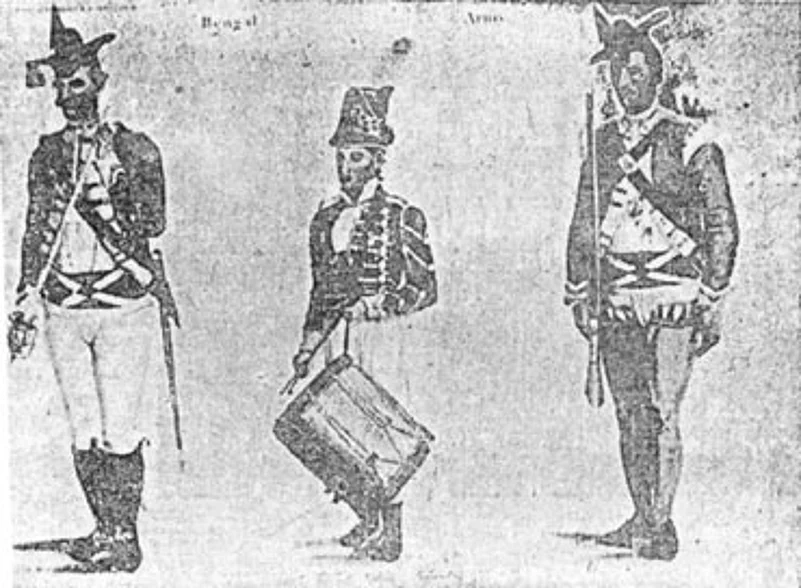
the controversial turban (sported by the man in the middle)
A few months prior to the mutiny, Mohammedan fakirsfrom Mysore were spotted roaming the streets and bazaars of Vellore raisingslogans against the firangis. The nomadic fakirs have had a historicalassociation with various Indian armies-the Holkars, the Scindias, the kings ofJaipur -- since the 18th century, sometimes acting as mercenaries, joiningforces with whoever hired them. But in the regulations-driven English army theyhad little place and were seen as troublemakers. Sighted in Vellore since 1805,they acted as agent provocateurs. Under the leadership of Abdullah Khan andPeerzada, former associates of Tipu, the fakirs staged puppet shows in Vellorelampooning the English and proclaiming their impending doom. Mocking the Hindusand Muslims in the army for accepting the new regulations, for sporting theturban which comprised a leather cockade -- thus inviting caste and religious‘pollution’-- and a turnscrew resembling a cross to be worn next to theheart, the fakirs proclaimed that these would lead to the eventual conversion ofall sepoys to Christianity. Ostensibly, the Mohammedan soldiers, being theerstwhile ruling class, resented the idea of conversion more than their Hinducounterparts.
According to Maya Gupta’s research based largely on sources in the IndiaOffice library, London, on 6 May 1806, 29 sepoys of the second battalion of the4th Regiment who were ordered to wear the new turban refused. Continuing theirdefiance the following day, placing handkerchiefs on their bare heads, theyabused the English officers as ‘dogs’. The insubordinate sepoys wereconfined to Madras and court-martialed. While punishment was spared to sepoyswho regretted and relented, two defiant havildars -- one Muslim, one Hindu --were subjected to 900 lashes. In June, a similar anti-turban agitation rockedWallajhabad in the vicinity of Vellore.
On 17 June, Mustafa Beg, a sepoy of the 1st Regiment, leaked news of thebrewing conspiracy to his commanding officer Lt. Col. Forbes. The officer soughtthe opinion of the native officers who dismissed the plot and declared Beg to beinsane. Beg was transferred and placed in confinement only to be later rewardedwith 7,000 rupees and a subedar’s pension. Volumes of Secret Sundries(British military records), believed, in hindsight, that the mutineers,especially those of officer rank, seeking to reinstate the rule of Mysore, werein touch with the Poligars (feudal chieftains in the Deccan), the Holkars, theMarathas, the deposed rulers of Hyderabad and even the French in Pondicherry.They had set July 14 as the common date for mutiny, but Beg’s treachery hadhastened them.
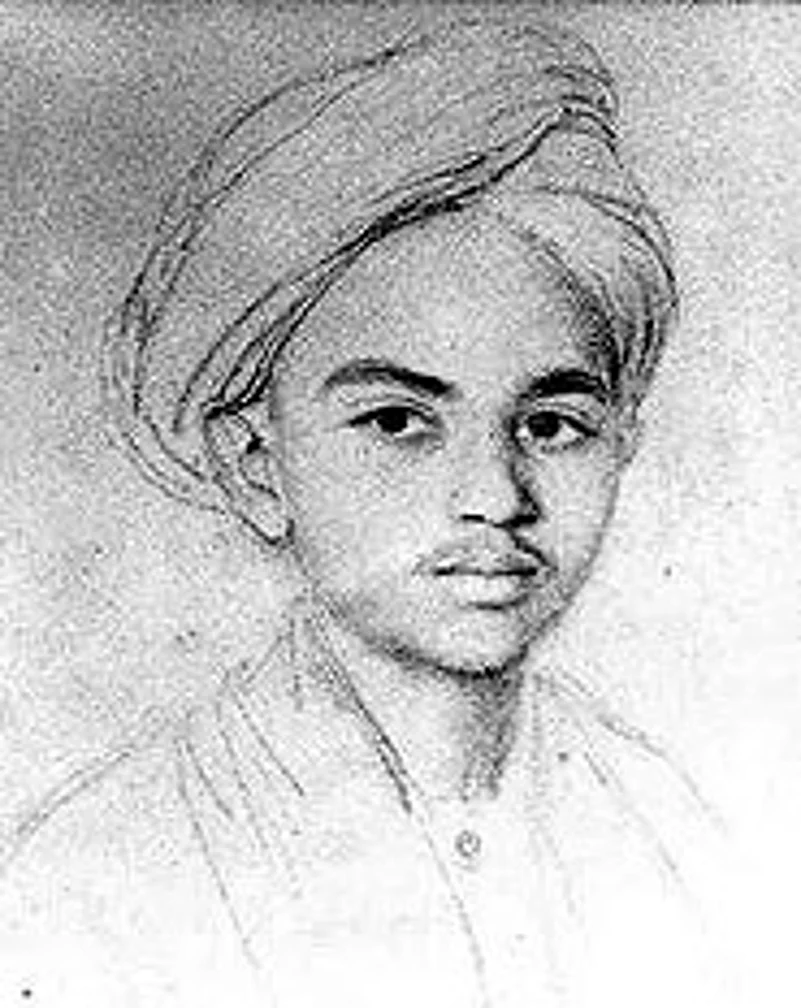
Fatteh Hyder, Tipu’s first son, was perceived to beof one of the key architects of the rebellion, besides Mohiuddin and Moizuddin,the third and fourth sons. Soon after the rebels took control of the Vellorefort on 10 July, they hoisted the flag of Tipu Sultan on the fort and Moizuddinpromised to double the salary of the sepoys when the rebellion was completed.While Colonel Fancourt, commanding officer of the Vellore garrison, andLieutenant Kerras, commanding officer of the 23rd Regiment, were shot atpointblank range, several officers escaped and hid themselves and passed word tothe nearest British military station at Arcot. Once the massacre ended and thefort was taken, the sepoys indulged in plunder -- ransacking the Englishquarters and paymaster’s office -- losing focus of their larger goal. By 7a.m., several civilians had also entered the fort. According to one Britishestimate, 5,48,429 pagodas were plundered in the mutiny. As the sepoys andcivilians pillaged, Col. Gillespie from Arcot led the 19th Dragoons and the 7thcavalry quite easily since three of the four outer gates of the fort were leftunattended. With Col. Kennedy arriving with more reinforcements and the Indiansepoys running out of ammunition, the fort was as easily taken back as had beenwon by the mutineers. In under eight hours, the entire drama was over. Gillespieand his men spared the princes and others of Tipu’s family; the entireprincely retinue was shifted to faraway Calcutta by January 1807.
British military records say that 787 soldiers escaped and 446 wererecaptured largely from areas such as Salem, Madurai and Tirunelveli. Accordingto Secret Despatches, Vol 33, "Six convicted mutineers were blown awayfrom guns [canons], five were shot with musketry, eight were hung." Theseexecutions took place in the western part of the fort. In the Manual of theNorth Arcot District (1898) magistrate Arthur C. Fox notes with unrestrainedglee that the execution by blowing away from the guns "produced theprofoundest impression. A spectator describes how numbers of kites accompaniedthe party to the place of execution, flapping their wings and screeching as ifin anticipation of the bloody feast, till the fatal flash which scattered theirfragments of bodies in air, when, pouncing on their prey, they caught in theirtalons many pieces of quivering flesh before they could reach the ground. Atsight of this the native troops employed on duty, together with the crowdassembled to witness the execution, set up a yell of horror." Such horrorsperhaps left a devastating impression on the south for it to bypass 1857.
According to K.A. Manikumar, professor of history atManonmaniam Sundaranar University, who is compiling a volume on the mutiny forthe unofficial Vellore Bicentennial Commemoration Committee: "The Velloremutiny can be understood in terms of what historian Eric Hobsbawm characterisesas ‘proto-nationalism’, where resistance arises from differences inlanguage, race, customs, dress etc."
On why this incident has remained on the fringes of the national imagination,A.R. Venkatachalapthy, associate professor with the Madras Institute ofDevelopment Studies, says: "Tamil Nadu has always been on the margins ofnationalist historiography, dominated as it has been by the north and Bengal.The ‘anti-nationalist’ trajectory that TN took even by the late 1920s underPeriyar and subsequent phenomena like the anti-Hindi agitation and the rise ofthe DMK, seemed to justify such marginalisation. The silence over Vellore mustbe understood in this background." He reckons that Vellore was a mutiny in thestrict sense of the word. "It started in the barracks and lay confined to it,whereas 1857 began as a mutiny and spread over large parts of north India as acivil rebellion."
Today, Tipu Mahal in Vellore fort, the seat of conspiracy, is underunsupervised renovation. It is now part of a Police Training College wheresub-inspectors of the TN Police used to train -- bathing and defecating whereroyalty once lived. The sub-inspectors made way for the mahal to be rendered ahigh-security prison for LTTE cadre. Another day, another rebellion. On 15August 1995, 43 LTTE cadres lodged in Tipu Mahal escaped after digging a153-foot tunnel through the moat. Shamefaced, the TN police has since barredaccess to the mahal. As a muted commemoration of the historic rising begins, theTamil public may well be denied a peek into the place where history was made.
A slightly shorter, edited version of this appears in print.










